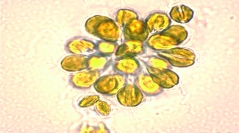

 Cryptogamie, Algologie
43 (3) - Pages 41-83
Cryptogamie, Algologie
43 (3) - Pages 41-83Cyanobacteria and eukaryotic microalgae are key players in life on Earth. They have adapted to a broad diversity of ecosystems, and ensure roughly half of the primary production. Their detailed study greatly benefits from isolated strains, deposited and maintained ex situ in culture collections, and made available to the scientific community along with expert knowledge. Established in the late 1920s, the culture collection of cyanobacteria and microalgae at the French National Museum of Natural History (MNHN) now comprises over 1350 non-axenic live strains isolated mostly from freshwater ecosystems in France. As a research-oriented collection, it contributes to biodiversity, taxonomy, genomics, and bioactive compounds research. Notably, the collection contains multiple strains of various genera of bloom-forming cyanobacteria that are of ecological concern, some of which produce cyanotoxins. Novel strategies for strain identification, conservation and accessibility are being implemented to provide an up-to-date resource to the community. Through research, expertise for ecotoxicology, partnerships with the industry or with artists, the MNHN collection appears at both a repository of biodiversity as well as resource for life sciences.
Ecotoxicology, bloom-forming, cyanobacteria, biodiversity, non-axenic strains